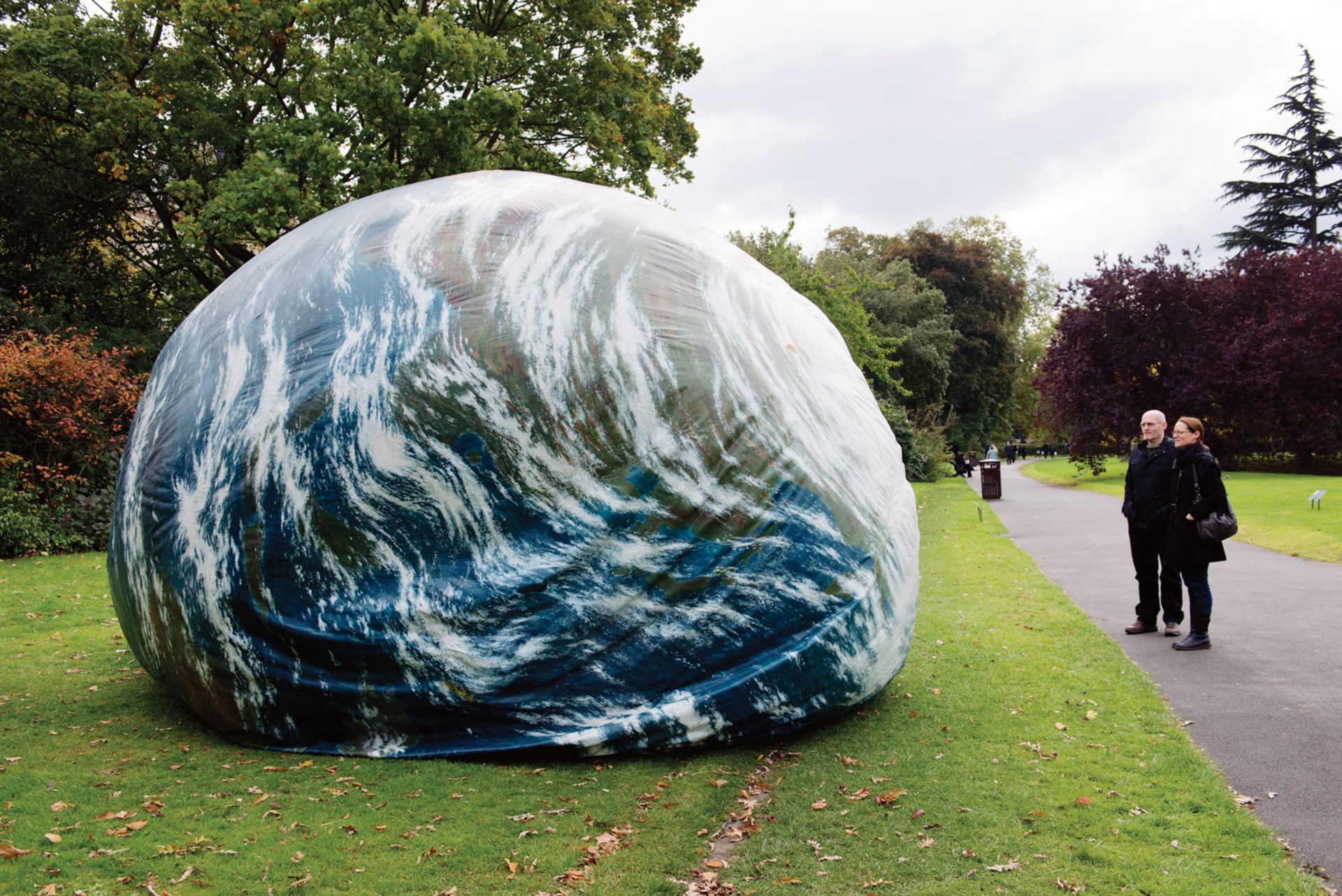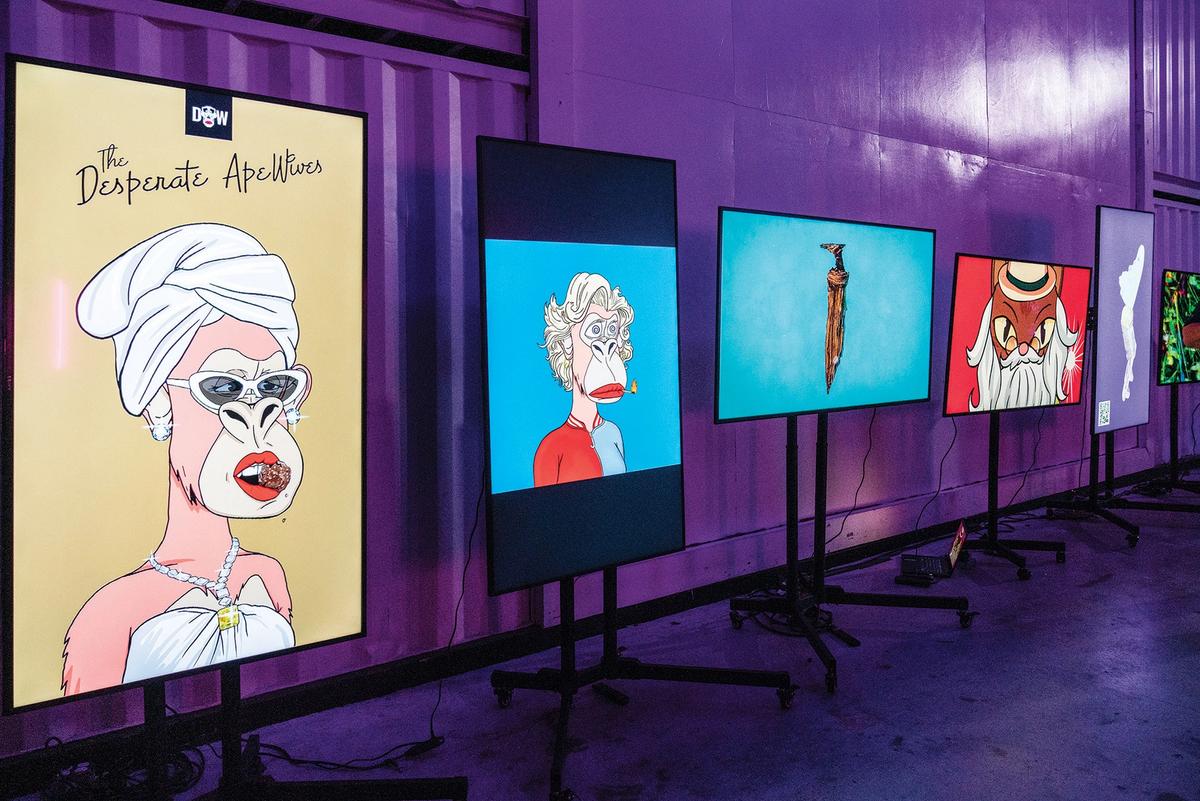If the past two years have taught us anything, it is that making predictions is a fool’s errand. But that did not stop us from asking various art-world figures to attempt such an errand.
Several subjects came up repeatedly—NFTs (what a surprise), collaboration within the industry, concerns about carbon emissions and speculation on young artists. Add to these the fact that major auctions will continue to be engineered by increasingly complicated guarantees, as the market becomes (even more) financialised, and Asian buying will continue to be a vital force.
But, as the analyst Anders Petterson of ArtTactic predicts, it will be the US that strengthens its grip this year. “The US art market has spearheaded the recovery, with more than half (51%) of Sotheby’s, Christie’s and Phillips auction sales generated through New York in 2021, up from 43% in 2020.” That is driven by “pent-up demand, asset diversification and a generational shift in the art market” plus the US generational art wealth transfer, Petterson says, all factors that will only continue in 2022.
We will abide by a new seasonal tempo, that of Covid’s ebb and flowNicola Vassell, New York gallerist
As the Omicron variant spreads, there is also an awareness that Covid-19 could become endemic, shaping our lives in perpetuity. The New York-based gallerist Nicola Vassell thinks that while the market will continue to flourish despite inflation, “we will abide by a new seasonal tempo, that of Covid’s ebb and flow. Activity will accelerate when viral transmission is low and decrease when the opposite is true.”
NFTs may be unaffected by transmission rates but it will be a rockier ride in 2022. Jason Bailey, the co-founder of ClubNFT, predicts “a crash in the NFT market” but he isn’t worried as “historically NFTs are more fun and innovative in a bear market”. Guillaume Cerutti, the chief executive of Christie’s (quick to the action with that Beeple sale last March), foresees “continued and deeper cross-over between the NFT community and the traditional art world, expanding and diversifying the market”. Marc Spiegler, the global director of Art Basel, speaking fresh from a crypto-heavy Miami Beach, concurs: “The NFT space will become more interesting—mainly from a conceptual rather than aesthetic perspective. Don’t judge this book by its cover.”
New ecosystem
Yuki Terase, the Hong Kong-based co-founder of the advisory firm Art Intelligence Global, thinks NFTs “will revolutionise the way we consume, experience and share art, and this new ecosystem will be largely shaped and driven by new players in the market–strongly led by young Asian collectors.” The art lawyer Jon Sharples also sees a maturing of the NFT space with the validation of “artists crossing over from the ‘traditional’ art world into NFTs, secured by the launch of new platforms by the likes of Gagosian and Hauser & Wirth,” he says. However, regulators also have cryptocurrencies and NFTs in their sights and increased controls will inevitably dampen the frenzy.
All this is creating an ever more polarised art world, one divided between the NFT believers and sceptics, the speculators and the sit-back-and-wait-ers. The NFTs craze is, largely, rooted in speculation—players want to make money quick, they’re not terribly concerned by long-term appreciation. The same, in analogue form, is true with speculation on young painters at auction, resulting in million-plus prices for (largely figurative) works by under-35s. That will only increase in 2022, and with it the speed of flippers’ churn as certain in-demand names last one or two auction seasons before being cast over for the next. “Why would that stop?” says one London-based gallerist, who wishes to remain anonymous. “It’s too exciting. It’s an addiction, like gambling, and it’s grooming; there is no other word for it. There are certain artists that fit the bill—their work has to look good on a mobile phone, it’s happening far less with sculpture and with abstraction.” Sadly, it is “going to leave a very sad trail of short careers.”

Digital and physical collide: a visitor at Art Madrid 21 fair in May Photo: Samuel de Roman/Getty Images
In tandem with this on the primary market, the “buy one, gift one free [to an institution]” trend for the hottest artists will undoubtedly continue so long as competition and constructed primary market scarcity continues. And the collections of some institutions will start (or continue) to reflect market tastes.
Collaboration is key
Collaboration has been a Covid buzzword—an admirable intention, but the elephant in the room is that hierarchy is a bedrock of the market. We will see this year whether collaborative efforts such as the “non-hierarchical” International Galleries Alliance (IGA, launched in 2021) can meet their idealistic goals. As Joost Bosland, the director of Stevenson gallery, said in October when announcing the launch of IGA: “I have felt some frustration at how easily the lofty ideals of a year ago have fallen by the wayside as things get busier again.” The IGA, he hopes, will not be “just another Zoom project” that comes to nought.
Thomas Dane, the London-based dealer and a founding member of the Gallery Climate Coalition, also pledges to “carry on collaborating. Collaboration is so important in a world that seems so divided.” He adds: “The last year has seen the art world coming together to tackle climate issues. I truly feel this will continue to get stronger and we will see a greater sense of responsibility from both the commercial and
public spheres.”

Seung Taek-Lee’s Earth Play at Frieze Sculpture in 2015—issues of climate change are now at the forefront of many people’s minds going into 2022 Photo: Linda Nylind; courtesy of Linda Nylind/Frieze
Will Jarvis, the co-founder of the London gallery Sunday Painter, also foresees a “continued push towards more environmentally sustainable practices” while Cerutti pledges that Christie’s will uphold its “commitment to sustainability, moving closer to achieving carbon net zero by 2030.” (Cynics, however, will remember how quickly many leapt on planes to go to the New York auctions in November and Art Basel in Miami Beach in December...)
Jarvis adds that he thinks the art world will become increasingly democratised, and diversity and inclusivity will continue to be an important theme. But the neglected subject of accessibility needs to be added to this discussion—how many galleries and auction houses are fully wheelchair accessible, for instance?
Many are in philosophical mood. Emanuel Aguilar, the owner of Chicago’s Patron gallery, says the past two years have been about reflection and “that is reflected in how collectors and the industry is shifting—what has meaning and what [art] is worth the sweat, blood and tears that go into it will continue to take centre stage”. Trends will always exist, “but for the first time in a long time I believe the art world will focus on substance and intent more than mere fashion—at least here’s hoping”.
As for Aguilar’s 2022 resolutions, well, they seem fitting for many of us: “See more ocean, eat more bratwurst, enter more cathedrals and museums, share a cocktail with more friends.”


